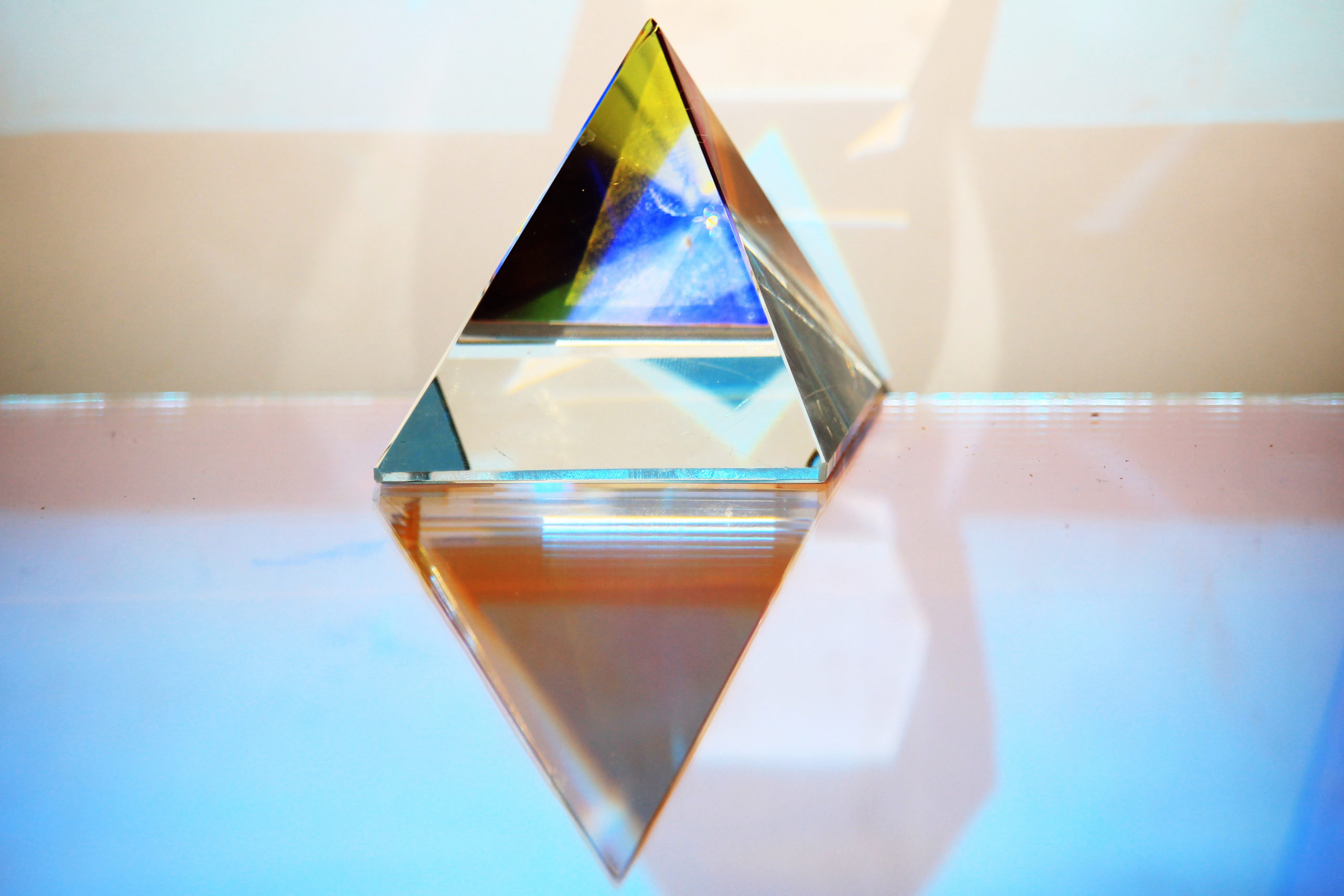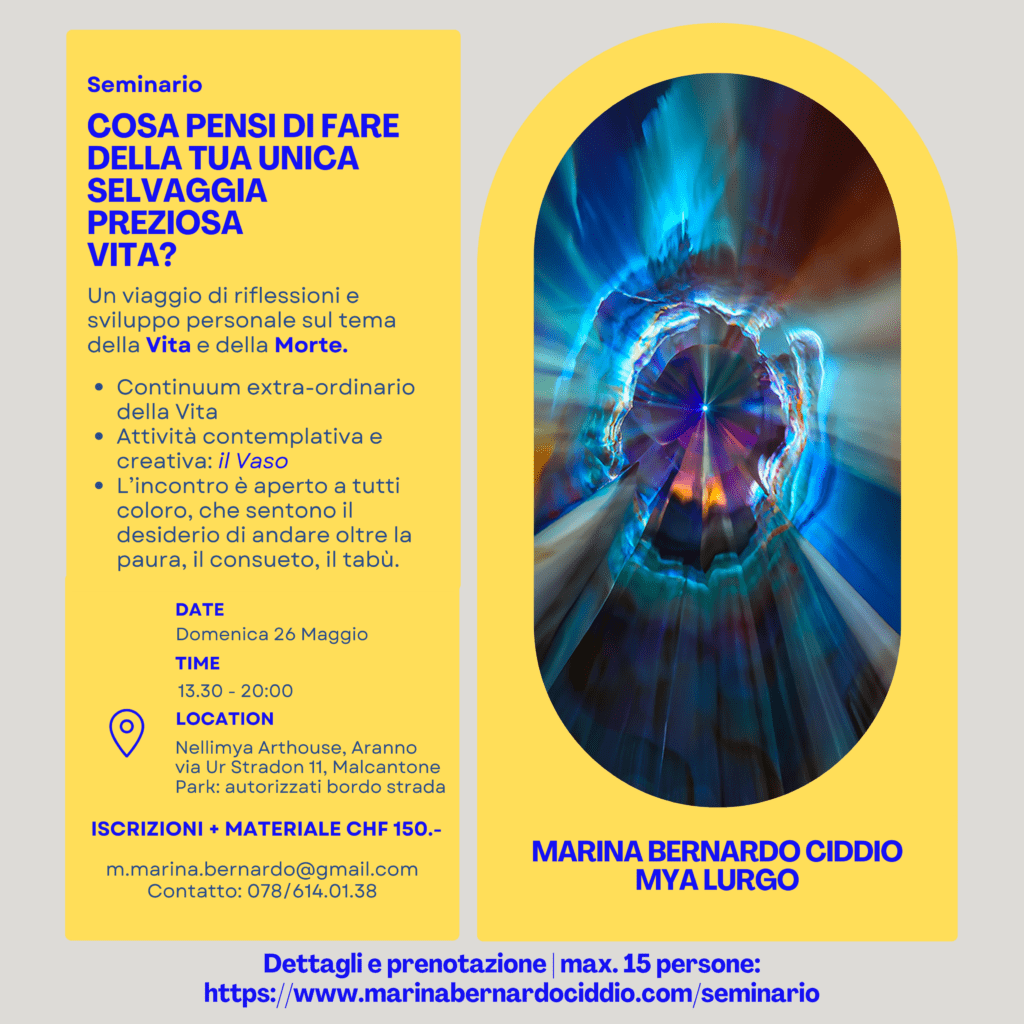Invitation to Performance | Feb. 14 – 15 – 16 | Elisarion Museum Cultural Center
SENSIBLE IS THE CLEAR LIGHT among fallacious semblances…like a thunderbolt
To experience the Objective Art announced by the Armenian mystic G. I. Gurdjieff
The work exhibited during the performance will be created by Mya Lurgo over four days at the Elisarion Museum in Minusio, keeping the artistic intent alive and unchanged for thirty-three hours. The performance will take place in the atmosphere generated by the Floating Configuration of Giovanna Galimberti and the inCanto of Nadia Radici, vocalist.
“Gurdjieff: To begin with, I will remind you that there are two kinds of art, objective art and subjective art, the one not at all different from the other. Everything you know, what you call art, is subjective art, which I refuse to call art, because I attribute this name only to objective art.
What I call objective art is difficult to define, first because you attribute its characteristics to subjective art, then because you place works of objective art, when confronted with them, on the same level as subjective art.
I will clearly state my thinking. You say: an artist creates. I reserve this expression for the objective artist. For the subjective artist, I say that in him ‘is created.’ But you do not make this distinction, which is also immense. Moreover, you attribute to subjective art an invariable action, in other words you believe that everyone will react the same way to subjective works of art. You imagine, for example, that a funeral march will cause sad and solemn thoughts to arise in everyone, and that any danceable music, a komarinski, for example, will elicit cheerful thoughts. In reality, this is not the case at all. Everything depends on associative processes. If I happened to hear for the first time, under the impression of a great misfortune, a cheerful tune, this tune would later arouse sad and oppressive thoughts in me, and all my life. And if, on a day when I felt particularly happy, I heard a sad tune, this tune would always provoke happy thoughts in me. This is how it generally happens.
The difference between objective art and subjective art, consists in the fact that in the former case the artist actually ‘creates,’ does what he intends to do, introduces into his work the ideas and feelings he wants. And the action of his work on people is absolutely precise; they will receive, of course each according to his own level, the same ideas and feelings that the artist intended to convey to them. When it comes to objective art, there can be nothing accidental, either in the creation of the work itself or in the impressions it arouses.
When it comes to subjective art, on the other hand, everything is accidental. The artist, I repeat, does not create; in him ‘something creates itself.’ This means that such an artist is at the mercy of ideas, thoughts, and moods that he himself does not understand and over which he has no control. They dominate him and express themselves in various forms. Once he accidentally takes any form, that form, again just as accidentally, will produce on the spectator this or that reaction according to his moods, his tastes, his habits, and the nature of the hypnosis under which he lives. There is in this nothing invariable, nothing determined. In objective art, on the contrary, nothing is indefinite.
Isn’t art in danger of disappearing by becoming so precise? One of us asked. And is there not precisely a certain imprecision, an indeterminate something, that distinguishes art, from the so-called science? If this impression disappeared, and if the artist himself ceased to ignore what he wanted to achieve, and knew a priori the impression his work would produce on the public, then it would be a ‘book’ … no longer art.
‘I don’t know what you are talking about,’ said Gurdjieff, ‘we use different measures: I value art by its ‘consciousness’; you value it the more ‘unconscious’ it is. We cannot understand each other. An objective work of art must be a ‘book’ as you call it; the only difference is that the artist does not convey his ideas directly with words, signs or hieroglyphics, but through certain feelings that he consciously and systematically arouses, knowing what he does and why he does it. Some legends,” one of those present then said, “speak of statues of gods, in the ancient temples of Greece-for example, the statue of Zeus at Olympia-that produced a definite impression on everyone, always the same.
Exactly right, said G. And the fact that such legends exist shows that the Ancients understood the difference between true and untrue art: the effect produced by the former is always the same, the effect produced by the latter, always accidental.
Couldn’t you point us to other works of objective art? Is there anything that can be called objective in contemporary art? When was the last work of objective art created?
Before talking about any of this, he replied, you must understand something fundamental. If you grasp these principles, you will be able to answer all these questions yourself. But if you do not understand the principles, nothing I can tell you will serve as an explanation. It is in this regard that it has been said: they will look with their eyes, and not see; they will listen with their ears, and not hear…”
P.D. Ouspensky, Fragments of an Unknown Teaching.


